 Over a dozen different forms of raised, one-sided doubling are currently recognized (Diamond 2006a). Some fall into the category of “die variety”, and include doubled dies, repunched dates, and repunched mintmarks. Some, like counterclash, are a form of die damage (Diamond 2002b, 2002c, 2004) and fall into the overarching category of “die error”. Some, like die deterioration doubling, are the result of die wear and deformation. Other forms of raised doubling, like “expansion ripples”, depend on the presence of an intervening die cap (Diamond 2005b).
Over a dozen different forms of raised, one-sided doubling are currently recognized (Diamond 2006a). Some fall into the category of “die variety”, and include doubled dies, repunched dates, and repunched mintmarks. Some, like counterclash, are a form of die damage (Diamond 2002b, 2002c, 2004) and fall into the overarching category of “die error”. Some, like die deterioration doubling, are the result of die wear and deformation. Other forms of raised doubling, like “expansion ripples”, depend on the presence of an intervening die cap (Diamond 2005b).
 In this article, I’ve chosen to restrict my coverage to forms of one-sided, raised doubling produced by simple, direct contact between die and coin. You’d think this would be a short list, but it’s actually far more extensive than most folks realize.
In this article, I’ve chosen to restrict my coverage to forms of one-sided, raised doubling produced by simple, direct contact between die and coin. You’d think this would be a short list, but it’s actually far more extensive than most folks realize.
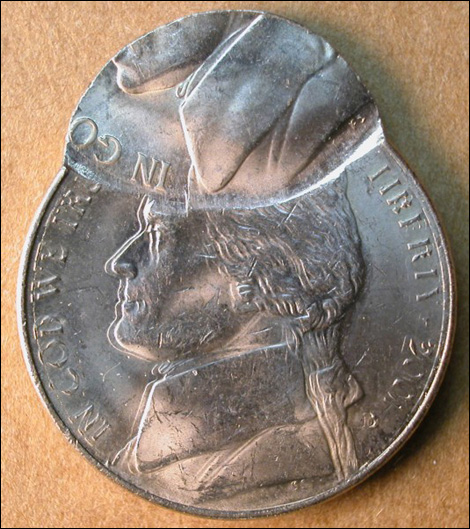
Figure 1a - Obverse face of a triple-struck 2001-D nickel with a horizontal misalignment of the hammer die on the second strike.
One-Sided Double-Strikes
 We begin with bona fide double-strikes, but with a twist. It’s possible for a newly-struck coin to remain firmly attached to one die, while the other die shifts position prior to the second strike. These are “one-sided” double strikes because the doubling is visible on only one face. There are two subtypes (Diamond 2002a, 2003).
We begin with bona fide double-strikes, but with a twist. It’s possible for a newly-struck coin to remain firmly attached to one die, while the other die shifts position prior to the second strike. These are “one-sided” double strikes because the doubling is visible on only one face. There are two subtypes (Diamond 2002a, 2003).
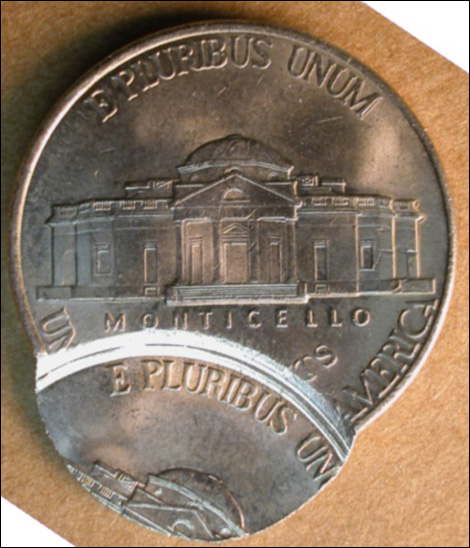
Figure 1b - Reverse face of the same coin.
 One type of one-sided double-strike features a horizontal misalignment of the hammer die between the first and second strike. Figure 1 shows such an error in a 2001-D nickel. The first strike was normal. The second strike featured a misalignment of the obverse (hammer) die toward the right. The coin rested fully within the collar during both strikes and it’s possible that the collar didn’t even retract between the two strikes. An off-center third strike is a splendid bonus. Surprisingly, that third strike was delivered by a different set of dies, as the reverse face shows a later die state. It also seems that the third strike was delivered with a considerable time delay. The two centered strikes are covered with lots of contact marks, while the third strike shows hardly any.
One type of one-sided double-strike features a horizontal misalignment of the hammer die between the first and second strike. Figure 1 shows such an error in a 2001-D nickel. The first strike was normal. The second strike featured a misalignment of the obverse (hammer) die toward the right. The coin rested fully within the collar during both strikes and it’s possible that the collar didn’t even retract between the two strikes. An off-center third strike is a splendid bonus. Surprisingly, that third strike was delivered by a different set of dies, as the reverse face shows a later die state. It also seems that the third strike was delivered with a considerable time delay. The two centered strikes are covered with lots of contact marks, while the third strike shows hardly any.
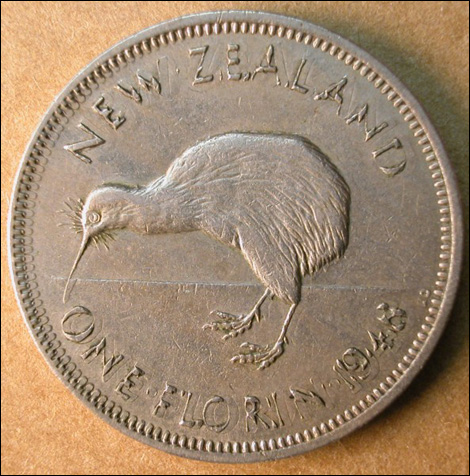
Figure 2a - Reverse face of a double-struck 1948 New Zealand 1 florin coin with a rotation of the hammer die on the second strike.
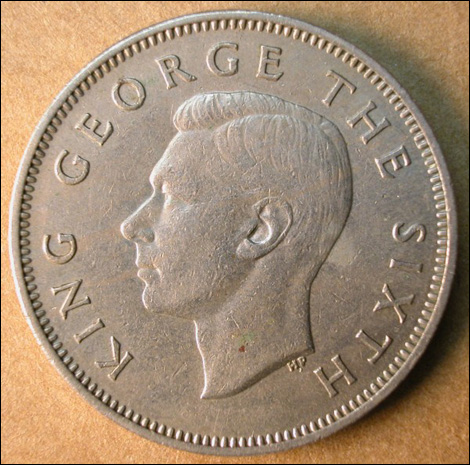
Figure 2b - Obverse face of the same coin.
 The other type of one-sided double-strike is produced when one die (usually the hammer die) rotates between strikes. Figure 2 shows a 1948 New Zealand florin with a one-sided double strike (rotational subtype) on the reverse face. New Zealand coins, like most British Commonwealth countries, strike their coins using the reverse die as the hammer die. There was a half-letter clockwise rotation between strikes. The coin was fully seated in the collar during both strikes and the reeding shows no disruption. Once again, I suspect the collar did not retract between the first and second strikes.
The other type of one-sided double-strike is produced when one die (usually the hammer die) rotates between strikes. Figure 2 shows a 1948 New Zealand florin with a one-sided double strike (rotational subtype) on the reverse face. New Zealand coins, like most British Commonwealth countries, strike their coins using the reverse die as the hammer die. There was a half-letter clockwise rotation between strikes. The coin was fully seated in the collar during both strikes and the reeding shows no disruption. Once again, I suspect the collar did not retract between the first and second strikes.
Machine Doubling
 This form of doubling has been variously referred to as “machine doubling”, “mechanical doubling”, “machine doubling damage”, “machine damage doubling”, “strike doubling”, “ejection doubling”, and “shift doubling”. It occurs after the hammer die has reached the lowest point of its downstroke. While machine doubling can occur on either face (or both faces simultaneously), truly severe cases seem restricted to the face struck by the hammer die. There are two subtypes of machine doubling (Diamond 2006b).
This form of doubling has been variously referred to as “machine doubling”, “mechanical doubling”, “machine doubling damage”, “machine damage doubling”, “strike doubling”, “ejection doubling”, and “shift doubling”. It occurs after the hammer die has reached the lowest point of its downstroke. While machine doubling can occur on either face (or both faces simultaneously), truly severe cases seem restricted to the face struck by the hammer die. There are two subtypes of machine doubling (Diamond 2006b).
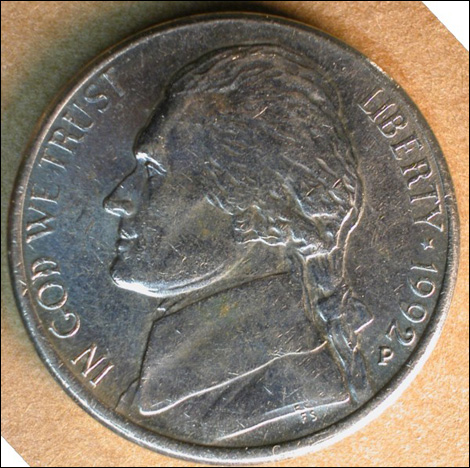
Figure 3a - A 1992-P nickel with severe machine doubling (“push doubling” subtype) on the obverse face. Coin acquired from Mark Westcott.
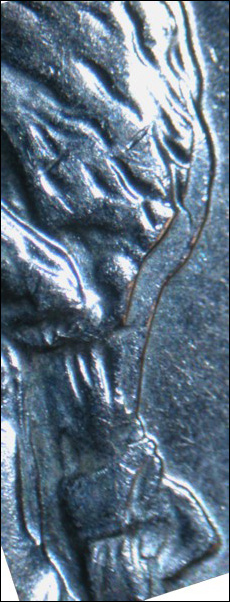
Figure 3b - Close-up of the back of Jefferson’s neck showing marginal shelving.
 The first type occurs when the hammer die bounces, shifts position and then comes down lightly on top of the coin in a different position. Sometimes referred to as “push doubling” or “push doubling damage”, it occasionally produces dramatic design duplication reminiscent of a double-strike. Figure 3 shows a 1992-P nickel with dramatic push doubling on the obverse face. The back of Jefferson’s head shows the flat, marginal shelving that is almost always present at the edge of design elements in this form of machine doubling. Clear design duplication appears at the bottom of Jefferson’s bust, most noticeably the designer’s initials. Another affected area is the underside of Jefferson’s throat. See Diamond (2006b) for other extreme examples of push doubling.
The first type occurs when the hammer die bounces, shifts position and then comes down lightly on top of the coin in a different position. Sometimes referred to as “push doubling” or “push doubling damage”, it occasionally produces dramatic design duplication reminiscent of a double-strike. Figure 3 shows a 1992-P nickel with dramatic push doubling on the obverse face. The back of Jefferson’s head shows the flat, marginal shelving that is almost always present at the edge of design elements in this form of machine doubling. Clear design duplication appears at the bottom of Jefferson’s bust, most noticeably the designer’s initials. Another affected area is the underside of Jefferson’s throat. See Diamond (2006b) for other extreme examples of push doubling.
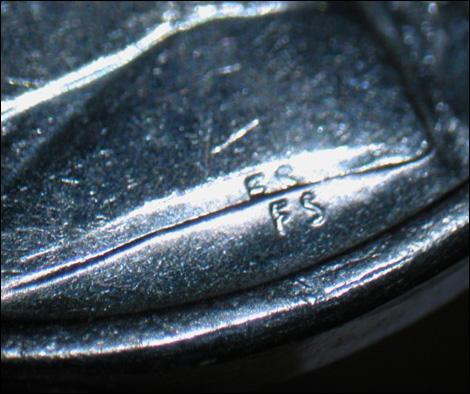
Figure 3c - Close-up of the base of Jefferson’s bust showing duplication of the designer’s initials.
 The other subtype of machine doubling commences the moment the lowest point of the downstroke is reached. The die shifts laterally before retraction begins and continues its lateral shift as retraction is intiated. As a result, the die drags itself through the design, smearing it and piling up metal in a series of ridges at the edge of each smeared area. Sometimes referred to as “slide doubling”, it can produce equally dramatic effects. Figure 4 shows a 1997-D Kennedy half dollar with severe slide doubling. After impact, the die dragged itself to the right, smearing the design in a grotesque fashion. This half dollar also shows a misalignment toward the left. Clearly this hammer die was unstable, landing initially too far to the left, and correcting its position by dragging itself to the right after impact. See Diamond (2006b) for equally dramatic examples.
The other subtype of machine doubling commences the moment the lowest point of the downstroke is reached. The die shifts laterally before retraction begins and continues its lateral shift as retraction is intiated. As a result, the die drags itself through the design, smearing it and piling up metal in a series of ridges at the edge of each smeared area. Sometimes referred to as “slide doubling”, it can produce equally dramatic effects. Figure 4 shows a 1997-D Kennedy half dollar with severe slide doubling. After impact, the die dragged itself to the right, smearing the design in a grotesque fashion. This half dollar also shows a misalignment toward the left. Clearly this hammer die was unstable, landing initially too far to the left, and correcting its position by dragging itself to the right after impact. See Diamond (2006b) for equally dramatic examples.
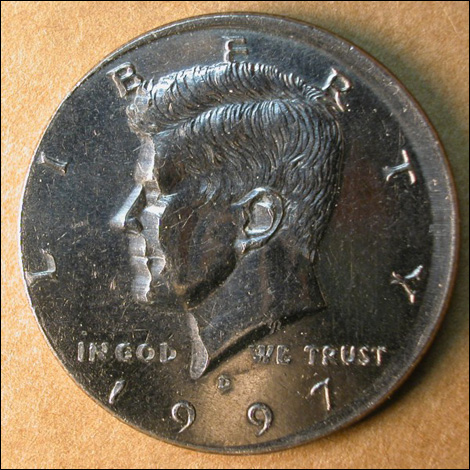
Figure 4 - A 1997-D half dollar with severe machine doubling (“slide doubling” subtype) on the obverse face.
Stutter Strike
 A stutter strike is the polar opposite of machine doubling. Instead of occurring after completion of the downstroke, it occurs near the beginning of the downstroke, just as contact is being made with the planchet (Diamond 2001).
A stutter strike is the polar opposite of machine doubling. Instead of occurring after completion of the downstroke, it occurs near the beginning of the downstroke, just as contact is being made with the planchet (Diamond 2001).
 A stutter strike can be caused by a die that is loose in the horizontal and vertical planes. If it shifts after making initial contact, you’ll find a coin with a thin crescent of die-struck design lateral to the normal design. A stutter strike can also occur as a rare side effect when a second planchet or coin intrudes into the striking chamber. It is often the case that a partial brockage or indent will cause the exposed part of the planchet to bend up toward the hammer die. The concentrated, asymmetrical pressure created by two stacked discs causes simultaneous expansion of the planchet well before the hammer die reaches its lowest point. On rare occasions, the upwardly angled portion of the planchet makes transient contact with the descending hammer die as it is simultaneously being pushed beyond the boundary of the striking chamber by the expanding part of the planchet trapped between the dies. The result is a trace of die-struck design on the otherwise unstruck part of the planchet, lateral to the normal die-struck design.
A stutter strike can be caused by a die that is loose in the horizontal and vertical planes. If it shifts after making initial contact, you’ll find a coin with a thin crescent of die-struck design lateral to the normal design. A stutter strike can also occur as a rare side effect when a second planchet or coin intrudes into the striking chamber. It is often the case that a partial brockage or indent will cause the exposed part of the planchet to bend up toward the hammer die. The concentrated, asymmetrical pressure created by two stacked discs causes simultaneous expansion of the planchet well before the hammer die reaches its lowest point. On rare occasions, the upwardly angled portion of the planchet makes transient contact with the descending hammer die as it is simultaneously being pushed beyond the boundary of the striking chamber by the expanding part of the planchet trapped between the dies. The result is a trace of die-struck design on the otherwise unstruck part of the planchet, lateral to the normal die-struck design.
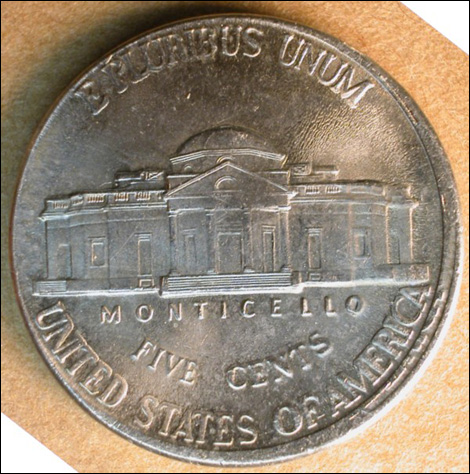
Figure 5a - Reverse face of a 1999-P nickel showing a very clear stutter strike in the southeast quadrant. Coin acquired from Charles Rickard.
 Figures 5 and 6 document a third circumstance leading to a stutter strike. These two 1999-P nickels were struck in a press in which the reverse die acted as the hammer die. (“Inverted die installation” was common by this time.) In this case the hammer (reverse) die was unstable. This alone wouldn’t have created a stutter strike except for the fact that each planchet was fed in off-center on top of a very stiff collar.
Figures 5 and 6 document a third circumstance leading to a stutter strike. These two 1999-P nickels were struck in a press in which the reverse die acted as the hammer die. (“Inverted die installation” was common by this time.) In this case the hammer (reverse) die was unstable. This alone wouldn’t have created a stutter strike except for the fact that each planchet was fed in off-center on top of a very stiff collar.
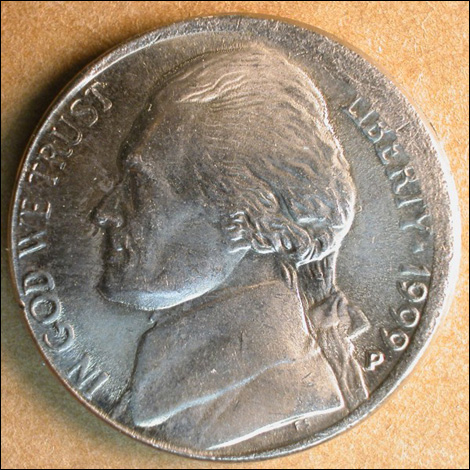
Figure 5b - Obverse face of the same coin.
 These three ingredients (wobbly die, off-center feed, stiff collar) led to the production of a large group of stutter strikes and near-stutter strikes. Dozens, perhaps hundreds, of nickels were produced by this malfunctioning press. Many of them show a greater or lesser degree of stutter strike development. Only a few show as much design duplication as the coin in Figure 5. The tips of the letters of AMERICA show beneath the normal letters.
These three ingredients (wobbly die, off-center feed, stiff collar) led to the production of a large group of stutter strikes and near-stutter strikes. Dozens, perhaps hundreds, of nickels were produced by this malfunctioning press. Many of them show a greater or lesser degree of stutter strike development. Only a few show as much design duplication as the coin in Figure 5. The tips of the letters of AMERICA show beneath the normal letters.
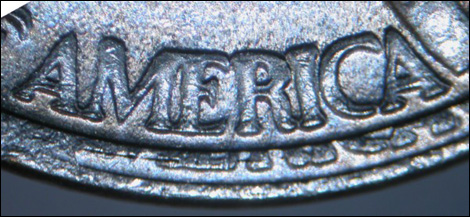
Figure 5c - Close-up of the affected area, showing an extra set of letter tips from AMERICA.
 A trace of those letter tips are seen in the nickel shown in Figure 6. Here’s what I think happened: The hammer die initially struck the planchet where it was resting on the stiff collar. This was the highest point of the planchet, with the remainder tilted down into the striking chamber. With the initial impact, the hammer die shifted to one side while simultaneously bouncing up or causing the collar to recoil downward.
A trace of those letter tips are seen in the nickel shown in Figure 6. Here’s what I think happened: The hammer die initially struck the planchet where it was resting on the stiff collar. This was the highest point of the planchet, with the remainder tilted down into the striking chamber. With the initial impact, the hammer die shifted to one side while simultaneously bouncing up or causing the collar to recoil downward.
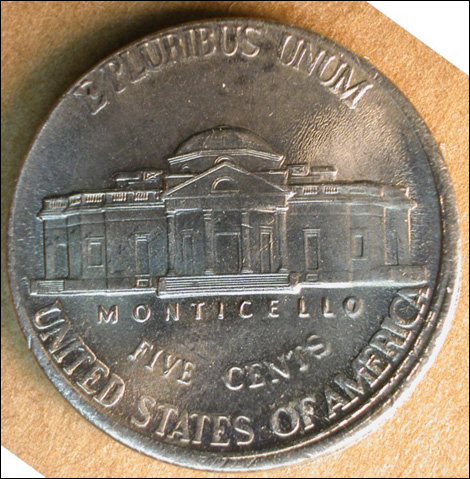
Figure 6a - Reverse face of another 1999-P nickel showing a very clear stutter strike in the southeast quadrant. Coin acquired from Bill Erdakos.
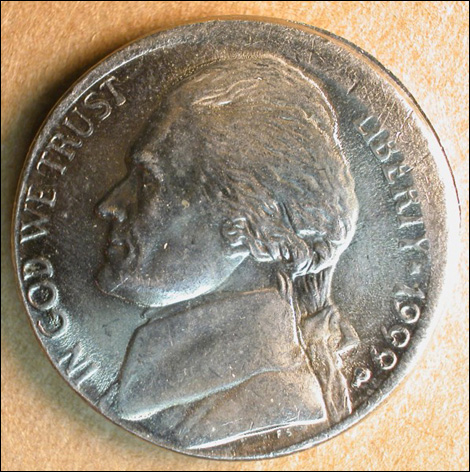
Figure 6b - Obverse face of the same coin.
 The hammer die then completed its downstroke while simultaneously depressing the collar through the intermediary of the off-center planchet. The letter tips are the result of the initial light contact, while the full design was produced at the completion of the downstroke. See Diamond (2001) for more examples of stutter strikes.
The hammer die then completed its downstroke while simultaneously depressing the collar through the intermediary of the off-center planchet. The letter tips are the result of the initial light contact, while the full design was produced at the completion of the downstroke. See Diamond (2001) for more examples of stutter strikes.
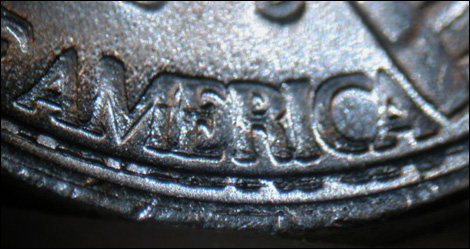
Figure 6c - Close-up of the affected area, showing an extra set of letter tips from AMERICA.
Ejection Impact Doubling (EID)
 Ejection impact doubling was recently recognized and named by Diamond (2005a). Definitive examples are so far only known in 2000-P and 2000-D Sacagawea dollars. It occurs when a newly struck coin is ejected from the striking chamber and is thrust or hurled into the hammer die face. Shallow, recessed design elements in the die face contact high-relief areas of the coin, causing light transfer of design elements from die to coin. Transferred design elements are incomplete, patchily distributed, and often located in positions far removed from their normal counterparts. While the duplicated design elements usually show the same orientation as their normal counterparts, a small percentage show dramatic rotation. Many different die pairs have produced hundreds of examples of EID among the aforementioned dollar coins. Figure 7 shows a classic example of EID in the form of an extra iris and pupil sitting on the brow of a 2000-P Sacagawa dollar. Its normal counterpart is the iris and pupil you see on the right. See Diamond (2005a) for more examples.
Ejection impact doubling was recently recognized and named by Diamond (2005a). Definitive examples are so far only known in 2000-P and 2000-D Sacagawea dollars. It occurs when a newly struck coin is ejected from the striking chamber and is thrust or hurled into the hammer die face. Shallow, recessed design elements in the die face contact high-relief areas of the coin, causing light transfer of design elements from die to coin. Transferred design elements are incomplete, patchily distributed, and often located in positions far removed from their normal counterparts. While the duplicated design elements usually show the same orientation as their normal counterparts, a small percentage show dramatic rotation. Many different die pairs have produced hundreds of examples of EID among the aforementioned dollar coins. Figure 7 shows a classic example of EID in the form of an extra iris and pupil sitting on the brow of a 2000-P Sacagawa dollar. Its normal counterpart is the iris and pupil you see on the right. See Diamond (2005a) for more examples.
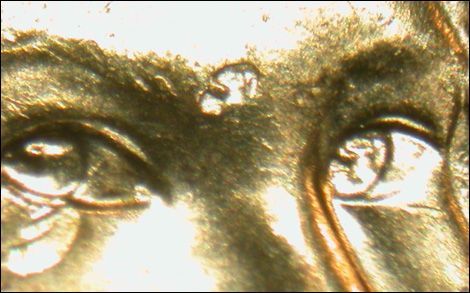
Figure 7 - An example of ejection impact doubling on a 2000-P Sacagawea dollar. An extra right iris and pupil sits in the middle of her brow, equidistant from the two normal eyes. Coin discovered by Mike Clements.
Other Forms
 Other forms of raised doubling arising from direct die contact are known or suspected. Robert (“BJ”) Neff recently discovered a remarkable example in a 2004 cent (Figure 8). The tips of the letters “ITED STATES … AM” are prominently displayed on the design rim, just above and to the left of their normal counterparts. Everything else about the coin is perfectly normal. This may be an unusual (and unprecedented) form of strike doubling or ejection impact doubling. Or it may be something new. A full report will be published in the January/February 2007 Errorscope (Diamond, in press).
Other forms of raised doubling arising from direct die contact are known or suspected. Robert (“BJ”) Neff recently discovered a remarkable example in a 2004 cent (Figure 8). The tips of the letters “ITED STATES … AM” are prominently displayed on the design rim, just above and to the left of their normal counterparts. Everything else about the coin is perfectly normal. This may be an unusual (and unprecedented) form of strike doubling or ejection impact doubling. Or it may be something new. A full report will be published in the January/February 2007 Errorscope (Diamond, in press).
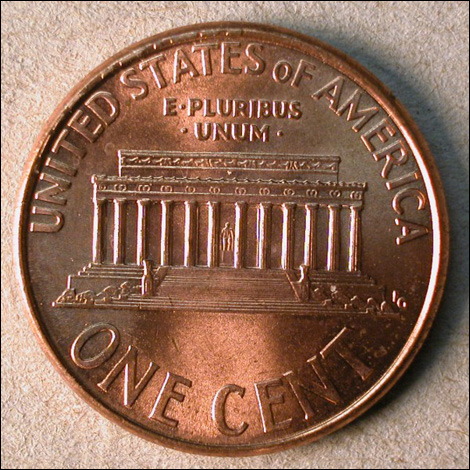
Figure 8a - Reverse face of a 2004 cent showing an extra set of letter tips on the design rim. The tips of the letters “ITED STATES…AM” have been duplicated by a process that has yet to be determined. Coin discovered by Robert (“BJ”) Neff.
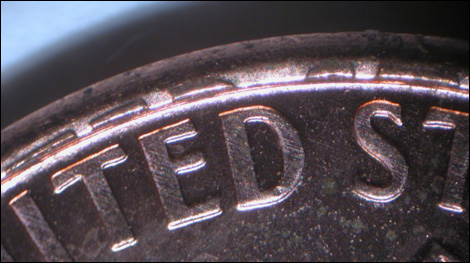
Figure 8b - Close-up of the letters “TED ST”.
References
Diamond, Mike (2001) Stutter strikes: Multiple impressions from a single downstroke. Errorscope, Nov/Dec, pp. 6 – 12
Diamond, Mike (2002a) One-sided multi-strikes: More than a myth. Errorscope, Jan/Feb, pp. 5 - 11
Diamond, Mike (2002b) Die damage with design transfer. Part II. Errorscope, May/June, pp 5 – 13
Diamond, Mike 2002c) New Discovery: Counterclash error on a 2000-P Sacagawea dollar. Errorscope, Sept/Oct, pp. 28-29
Diamond, Mike (2003) “One-sided” multi-strikes: An update. Errorscope, July/August, pp. 5 - 7
Diamond, Mike (2004) Double clash with counterclash: A predicted error found at last. Errorscope, Nov/Dec, pp. 22 - 24
Diamond, Mike (2005a) Ejection impact doubling: A novel form of post-strike design transfer. Errorscope, Jan/Feb, pp. 9 – 14
Diamond, Mike (2005b) Replication without explanation: Peculiar forms of doubling seen in capped die strikes and other “strike-through” errors. Errorscope, Nov/Dec, pp. 24 - 31
Diamond, Mike (2006a) Unexplained, raised doubling in a “grease strike” cent (with a review of raised doubling). Errorscope, March/April, pp. 5 - 8
Diamond, Mike (2006b) The outer reaches of machine doubling: A smattering of extreme and unsual examples. Errorscope, July/August, pp.20 – 27
Diamond, Mike (in press) Extra Letters on the Rim of a 2004 Cent: A New Form of Doubling? Errorscope

